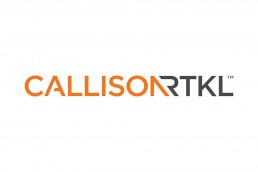Ramsay Ritchie, Hospitality Practice Lead at architecture, planning and design firm CRTKL, analyses the hotel market and explains why investing now could secure a stable future.
As lockdown restrictions ease and consumer confidence starts to return, there are some green signs of optimism for the hospitality industry, however the scars of the pandemic will not heal overnight. Burgeoning trends that we were already seeing have been accelerated 20 years, with shifting lifestyle and working behaviours leading to a significant change in the way that architects, investors and operators need to think about assets to ensure their long-term viability. Learn and evolve, or risk getting left behind.
Hospitality companies are keeping an eye on international travel trends and confirming who will be coming back, and in what numbers, before they make new significant capital. Through our contacts, we see those who might have some concerns that they may not be able to sell all of their current guestroom stock and may consider dividing up some of their space instead. For example, it is anticipated there could be up to a 50% drop in international business travel post-pandemic, which may result in longer stay products being required with some changes from hotel to branded residences.
This current standstill also presents another potential issue in the UK, where some existing planning permissions – which are valid for 3 years – could lapse in the next 18 months. Some may stand to lose their hard-won planning permissions if work does not commence by the end of next year. Do they risk starting work before we have more clarity, with the potential of getting the offering wrong?
On the subject of planning, many city centre planning use classes are currently protected in Central London, which makes some office to hotel conversions difficult until there is a political will to change this. However, due to the pandemic, we believe there will be more appetite to promote more blended use buildings with different types of residential, hotel and office space combined on the same site. This could significantly reduce some risk for the developer rather than banking on a single-use site offering.
A new type of traveller
We see that travellers are looking at different types of hotel offerings and at the longer stay market. The 90 days residency rule may need to be relaxed in the future for London and serviced branded apartments and residential blended models could be something that we see more of. There already seems to be an overlap of Build-to-Rent and other hospitality models, including later living and co-working.
Many holiday makers are looking for longer stays with lifestyle and luxury environments due to quarantine risks. Previous to the pandemic, many city centre hoteliers were mostly interested in two- or three-night stays but there is a greater awareness of the longer stay products now. More people will want to stay on holiday for longer, perhaps taking a week’s break and then another week to work remotely from the same location – known as ‘bleisure’. For hoteliers, this means some potential repositioning and in some cases a rebranding process.
A shifting sector – luxury and lifestyle
Since the ’90s in the UK, many sectors have polarised and the hospitality market is no different. When I started working in the hotels sector, the standard was a Crowne Plaza but very quickly, Premier Inn and Travel Lodge started capturing some of the mid-market arena, and then new boutique players filtered through, so the luxury market also came under pressure from new competitors. Many realised that they needed significant refurbishments to compete with lifestyle brands and we are now seeing some luxury products overlapping with the lifestyle market and some business travellers moving to budget brands. There could be a boom in both the lifestyle and the budget markets to make cities more attractive for different types of travel.
Design changes and new technology
The hotel industry is constantly evolving and this is where design adaptability really becomes important. What the first phase of the build looks like could look very different to the second phase, as we experienced whilst working for Grange Hotels.
We believe the biggest challenge with urban hotels is that they are constrained by guestroom sizes, but generally we are seeing that room sizes are getting much, much bigger. At one hotel project, an operator wanted us to design only suites, while another I worked on in Montenegro offered duplex apartments, so it was more of a residential development with some guestrooms. I personally see the value in the two sectors being more intrinsically linked.
New technology will also be important. Things like circadian lighting that matches hormones and rhythms are being used in later living projects and we are now seeing hoteliers also asking for this. There will be a lot of hoteliers upgrading lighting and their interiors – things like fabric wallcoverings may disappear because deep cleans are more important.
Meeting the demands of Generation Consumer
The key to many great hotel stays will be what they can offer in terms of outside space. Guests will want roof terraces, balconies, proximity to outside space and any facility where dining is available on an outside terrace. People generally do not want to sit in an enclosed room or a standard restaurant anymore, they want the full lifestyle offering. There is a blending of urban resort design coming through but it is more difficult for the London market, where space is tight and there are also significant height restrictions.
Operators are realising that they will need to have the same number of covers outside as they have inside. People naturally feel safer outside, and I think that’s what will happen all year round, no matter the weather. They will want some sort of sheltered covered space where they can relax and with this in mind, we will see roofs and courtyard spaces changing.
ESG at the forefront
We are also reaching a critical inflection point as the Environmental, Social and Governance (ESG) agenda comes to the fore. Whereas before operators looked at their brand standards and saw sustainability as a tick box exercise, it is now becoming a brand differential within itself. Many lifestyle brands are aware of their water usage and are including living walls and biodiversity features, which is becoming almost as important for many holiday makers as food service now. That’s not a statement any of us could have predicted 20 years ago.
Equally, developers are becoming more interested in operational costs, costs in use and costs to refurbish. Construction can be a destructive process and uses significant human and natural resources, accounting for around 38% of global C02 emissions, so there will be a lot more recycling and re-using existing properties in the future. This is something that we are heavily focused on with our recraft methodology, which can breathe new life and income into existing assets, however, to be truly sustainable we have to look at our entire supply chain and how much carbon is being used in manufacturing every item. It is an area that as a firm we are passionate about – it’s an exciting space to explore.
Securing a positive future
Ultimately, the hotel industry must invest more for the future. The days of non-disruption to operations have passed and are not coming back for many in the near term. Creating estates where all parties can contribute in a holistic way will ensure the industry is fit for the future and able to grow in a controlled way. Hopefully, this pandemic will help limit economic cycles that are often so disruptive to investment and sustainable development.
Related Posts
9 August 2021
CallisonRTKL on the future of the hotel market
9 August 2021



